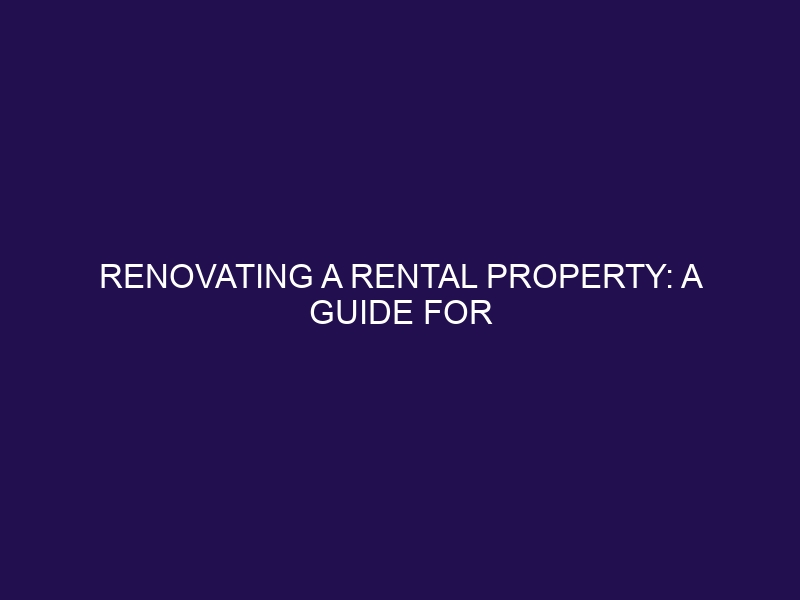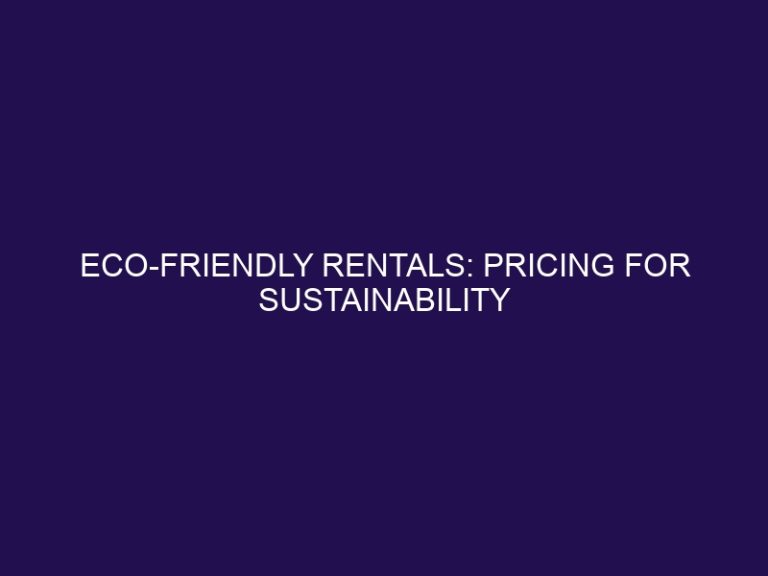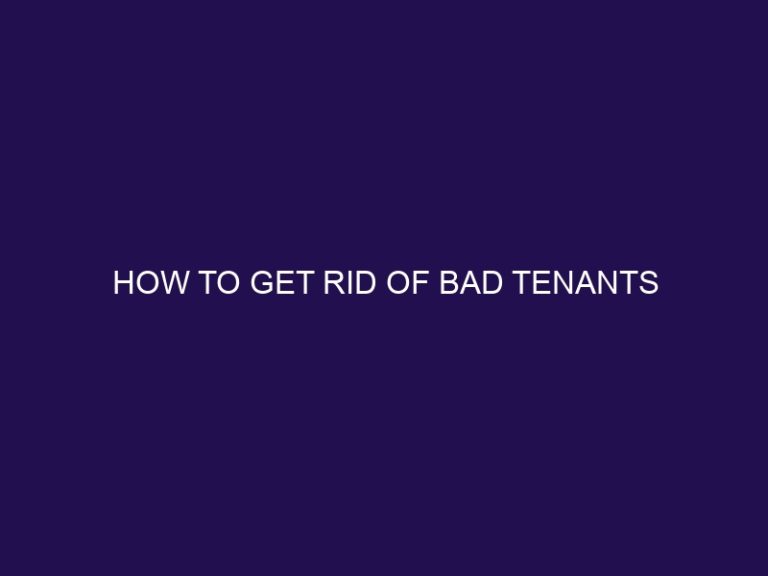Renovating a rental property: A guide for Canadian landlords
Renovating a rental property is a crucial aspect of being a Canadian landlord. It not only helps improve the overall condition and appeal of the property but also has significant benefits for attracting quality tenants and increasing rental value. Understanding the importance of renovations is the first step towards successful property management.
Renovations can increase rental value by providing updated and desirable features that tenants are willing to pay more for. They can also attract quality tenants who value well-maintained properties and are more likely to take care of the rental unit. Assessing the current condition of the property is essential to identify necessary repairs, maintenance tasks, and potential upgrades.
Creating a renovation plan and setting a realistic budget is vital to ensure a successful project. Clear goals should be defined, and costs should be estimated to avoid any financial issues. The decision to hire professional contractors or take on do-it-yourself (DIY) renovations should be carefully considered, weighing the pros and cons of both options.
It is crucial to understand the legal and regulatory requirements associated with renovations. Permits and permissions may be necessary, and familiarity with rental property standards and codes is essential to ensure compliance. When selecting renovation materials and finishes, it is recommended to choose durable and easy-to-maintain options that suit the rental property’s budget.
Completing the renovation process involves managing timelines, staying organized, and effective communication with tenants. By following this guide, Canadian landlords can navigate the renovation process successfully and create attractive and desirable rental properties for long-term success and profitability.
Understanding the Importance of Renovations for Rental Properties
Discover the power of renovations for rental properties! Uncover how these upgrades can boost your rental value and attract high-quality tenants. With the right renovations, you can enhance your property’s appeal, create a welcoming environment, and maximize your return on investment. Learn why savvy landlords prioritize renovations and gain insights into the benefits they bring. It’s time to take your rental property to the next level and reap the rewards of smart renovations.
How Renovations Can Increase Rental Value
How Renovations Can Increase Rental Value
Renovations can greatly increase the value of a rental property, attracting quality tenants and allowing for higher rental prices. Here are some ways in which renovations can increase rental value:
- Updating the kitchen and bathroom: These are key areas that tenants often prioritize, and modernizing them can make the property more appealing.
- Improving energy efficiency: Installing energy-efficient appliances, windows, and insulation can reduce utility costs for tenants and make the property more desirable.
- Enhancing curb appeal: First impressions matter, so investing in landscaping, painting, and exterior repairs can attract higher quality tenants.
- Expanding living space: Adding an extra bedroom or creating an open-concept layout can increase the property’s rental value.
- Installing modern amenities: Adding amenities such as a gym, laundry facilities, or secure parking can justify higher rental prices.
By strategically planning and executing renovations, landlords can increase rental value and ultimately generate higher returns on their investment.
Benefits of Renovations for Attracting Quality Tenants
Renovating your rental property can attract quality tenants and bring several benefits:
- Higher demand: Renovated properties appeal to tenants looking for modern, well-maintained homes.
- Higher rental value: Upgraded amenities and improvements allow you to justify higher rental prices.
- Better tenant quality: High-quality tenants are more likely to be attracted to well-maintained properties.
- Longer tenancies: When tenants are satisfied with the property, they are more likely to stay longer, minimizing vacancies.
- Positive reputation: Word-of-mouth recommendations from satisfied tenants can attract more high-quality tenants.
To fully leverage the benefits, focus on key areas like kitchens, bathrooms, flooring, and amenities that contribute to an attractive living experience for tenants.
Assessing the Rental Property for Renovations
When it’s time to renovate your rental property, the first step is assessing what needs to be done. In this section, we’ll dive into the key aspects of evaluating your property for renovations. From identifying necessary repairs and maintenance to exploring potential upgrades and improvements, we’ll provide you with a comprehensive guide that will ensure your rental property is in top shape, attracting tenants and maximizing your return on investment. Let’s roll up our sleeves and get started!
Identifying Necessary Repairs and Maintenance
- Identifying necessary repairs and maintenance: Regular inspections are essential to identify any issues or maintenance needs that may arise in a rental property.
- Address tenant concerns: Actively listen to tenant feedback and promptly address any repair requests they may have.
- Prioritize safety: It is crucial to immediately identify and address any safety hazards or potential risks that may exist in the property.
- Maintenance checklist: Create a checklist of common maintenance tasks that need to be performed regularly, such as cleaning gutters, checking HVAC systems, and inspecting plumbing.
- Consider professional help: When it comes to major repairs or specialized tasks, hiring professional contractors ensures that the work is done correctly and efficiently.
- Keep records: Maintaining a record of all repairs and maintenance activities is important for reference and documentation purposes.
Assessing Potential Upgrades and Improvements
Assessing potential upgrades and improvements is a crucial step in enhancing the value of a rental property and attracting high-quality tenants. When considering possible upgrades, it is important to keep the functionality, aesthetics, and energy efficiency in mind.
First, assess the functionality of the property and identify areas that need improvement. This could include updating outdated appliances or installing more efficient fixtures.
Next, evaluate the overall appearance of the property and consider cosmetic upgrades such as repainting, replacing flooring, or updating the kitchen and bathroom fixtures.
Furthermore, it is essential to assess the energy efficiency of the property. Upgrades like insulation, energy-saving appliances, and LED lighting can attract tenants who are concerned about utility costs.
Additionally, future-proofing the property should be considered. This involves thinking about potential upgrades that can make the property more resilient to future trends and technological advancements. Examples include installing smart home features or high-speed internet infrastructure.
By conducting a comprehensive assessment of potential upgrades and improvements, landlords can make informed decisions and maximize the value of their rental property.
Creating a Renovation Plan and Budget
When it comes to renovating a rental property in Canada, one crucial aspect is creating a comprehensive renovation plan and budget. In this section, we’ll dive into the nitty-gritty details of this process. Discover how setting clear goals for your renovation project is crucial to its success. We’ll also explore the art of estimating costs and creating a realistic budget, providing insights backed by reliable sources. We’ll weigh the pros and cons of hiring contractors versus taking a DIY approach. So, let’s roll up our sleeves and delve into the world of renovation planning and budgeting!
Setting Clear Goals for the Renovation Project
Setting clear goals for your rental property renovation project is crucial for a successful outcome. Here are some steps to help you set clear goals:
-
Assess the current state of the property: Identify areas that need improvement or repair.
-
Determine your target market: Understand the preferences and needs of your potential tenants.
-
Establish a budget: Determine how much you can allocate to your renovation project.
-
Prioritize renovations: Decide which areas or features will have the most impact on rental value and tenant satisfaction.
-
Set specific goals: Define what you want to achieve with each renovation, such as increasing rental income or attracting higher-quality tenants.
-
Create a timeline: Set deadlines for completing each renovation task.
-
Monitor progress: Regularly review and adjust your goals to ensure they align with your overall vision.
Fact: Setting clear goals increases the likelihood of completing a renovation project on time and within budget.
Estimating Costs and Creating a Realistic Budget
To estimate costs and create a realistic budget for renovating a rental property, follow these steps:
- Assess the scope of the renovation project by identifying all necessary repairs, upgrades, and improvements required for estimating costs and creating a realistic budget.
- Research the cost of materials and labor for each aspect of the renovation to aid in estimating costs and establishing a realistic budget.
- Gather multiple quotes from contractors to compare prices and determine the most cost-effective options for estimating costs and creating a realistic budget.
- Consider additional expenses such as permits, inspections, and potential unforeseen costs when estimating costs and establishing a realistic budget.
- Create a detailed spreadsheet or budgeting tool to track all expenses and ensure they align with your available funds, as part of the process of estimating costs and creating a realistic budget.
- Allocate funds for contingencies to cover any unexpected costs that may arise during the renovation, which is essential when estimating costs and creating a realistic budget.
- Regularly review and adjust your budget as the renovation progresses to keep costs in check, maintaining the process of estimating costs and creating a realistic budget.
Remember, it’s important to be realistic and set a budget that aligns with your financial limitations. By estimating costs and creating a detailed budget, you can ensure a successful renovation project without overspending.
Hiring Contractors or DIY: Pros and Cons
When deciding between hiring contractors or doing it yourself (DIY) to renovate a rental property as a Canadian landlord, careful consideration of the pros and cons is essential.
- Hiring Contractors:
- Pros: Professional expertise, time and effort savings, access to specialized tools, assurance of quality work, compliance with building codes and regulations.
- Cons: Higher costs, reliance on external schedules, potential delays or disputes, limited control over the process.
- DIY:
- Pros: Cost savings, flexibility in scheduling, hands-on involvement, control over every aspect, potential learning opportunity.
- Cons: Lack of expertise, time-consuming, potential for mistakes or rework, need for specialized tools, compliance with regulations may be challenging.
Benefits of Hiring Professional Contractors
- When you choose to hire professional contractors for rental property renovations, you can reap several benefits:
- Expertise: Professional contractors possess the necessary skills and experience to handle various renovation tasks efficiently and effectively.
- Time-saving: Contractors can complete projects within set timelines, allowing you to quickly make your rental property available for tenants.
- Quality workmanship: Professional contractors ensure high-quality results, which can enhance the appearance and functionality of your rental property.
- Compliance with regulations: Contractors are knowledgeable about building codes and regulations, reducing the risk of potential legal issues.
- It is important to note that hiring professional contractors also ensures proper liability insurance coverage, protecting you from any accidents or damages that may occur during the renovation process.
Considerations for Do-It-Yourself Renovations
When considering do-it-yourself renovations for your rental property, there are several important considerations for Do-It-Yourself renovations that you should keep in mind to ensure a successful outcome. Here are some key considerations for DIY renovations:
- Assess your skills and capabilities to determine which tasks you can confidently undertake.
- Create a detailed plan outlining the specific renovations you want to tackle.
- Research and gather all the necessary tools and materials for the project.
- Allocate a realistic budget for your DIY renovations, accounting for potential unexpected expenses.
- Follow all safety protocols and regulations to ensure a safe working environment.
- Take your time and be patient during the renovation process to avoid costly mistakes.
- Regularly communicate with your tenants to manage their expectations and minimize disruptions.
- Consider hiring professionals for certain aspects of the renovation if you lack the skills or time.
- Stay organized and keep track of all expenses and receipts for tax or future reference purposes.
Jane, a Canadian landlord, decided to embark on a DIY renovation project for her rental property. With careful planning, budgeting, and patience, she successfully transformed the outdated space into a modern and desirable rental unit. By saving on labor costs and investing her time and effort, Jane was able to maximize her rental income and attract high-quality tenants. Her DIY renovations not only increased the property’s value but also provided her with a sense of accomplishment as a hands-on real estate investor.
Understanding Legal and Regulatory Requirements
When it comes to renovating a rental property in Canada, understanding the legal and regulatory requirements is crucial. In this section, we’ll dive into the necessary permits and permissions for renovations, the importance of adhering to rental property standards and codes, and the art of selecting the right materials and finishes. Stay tuned to ensure you navigate the legal landscape smoothly while elevating your rental property to its full potential.
Permits and Permissions for Renovations
To ensure a smooth renovation process for your rental property, it is crucial to understand the permits and permissions required for your renovations. Here is a step-by-step guide to help you navigate this aspect:
- Research local regulations: Familiarize yourself with the specific permits and permissions required by your local municipality or province for renovation projects.
- Contact authorities: Reach out to the relevant authorities, such as the local building department or planning office, to clarify the necessary permits and documentation.
- Submit applications: Complete the required applications, providing detailed information about your planned renovations, including timelines, scope of work, and any required inspections.
- Pay fees: Pay any applicable fees associated with the permits and permissions. These costs can vary depending on the scale and nature of your renovations.
- Schedule inspections: Coordinate with the building department to schedule necessary inspections throughout different stages of the renovation process.
- Comply with regulations: Ensure that all renovation work adheres to local building codes and regulations, as failure to do so may result in penalties or delays.
- Document approvals: Keep copies of all permits, approvals, and inspections for your records. These documents may be required when selling or renting out the property in the future.
By following these steps and obtaining the necessary permits and permissions, you can proceed with your rental property renovations within the boundaries of the law, ensuring a successful and legally compliant project.
Understanding Rental Property Standards and Codes
Understanding rental property standards and codes is of utmost importance for Canadian landlords. It is critical to ensure compliance with regulations, prioritize tenant safety, and safeguard against legal troubles. Therefore, landlords must familiarize themselves with provincial regulations and be aware of the permits required for renovations. In order to minimize maintenance costs, it is advisable to select durable materials that meet the rental property standards. Additionally, adhering to building codes is essential to guarantee that the property satisfies safety and accessibility prerequisites. By having a comprehensive understanding of rental property standards and codes, landlords can effectively maintain a secure and compliant rental unit, attract high-quality tenants, and steer clear of potential liabilities.
Selecting Renovation Materials and Finishes
When selecting renovation materials and finishes, it’s important to consider various factors for both durability and aesthetics of a rental property. Here are some key considerations:
- Budget-Friendly Options: Look for cost-effective materials that are durable and easy to maintain.
- Quality and Durability: When selecting renovation materials and finishes, choose ones that can withstand wear and tear and require minimal upkeep.
- Tenant Considerations: Opt for neutral and timeless finishes that appeal to a wide range of tenants.
- Compliance with Regulations: Ensure that the materials and finishes meet local building codes and rental property standards.
Pro-Tip: Consider using eco-friendly materials that not only benefit the environment but also attract eco-conscious tenants.
Choosing Durable and Easy-to-Maintain Materials
- When renovating a rental property, it is vital to choose materials that are durable and easy to maintain.
- For flooring, consider options such as laminate or vinyl. These materials are not only durable but also easy to clean and resistant to stains and scratches.
- When painting, opt for washable, low-maintenance paint. This type of paint can withstand regular cleaning without chipping or fading easily.
- When selecting countertops, go for materials like quartz or solid surface. These materials are known for their durability, stain resistance, and minimal maintenance requirements.
- For fixtures, prioritize high-quality options made from stainless steel or brass. These materials are both durable and easy to clean and maintain.
- When choosing cabinets, look for materials like solid wood or MDF with a durable finish. Such materials are less likely to chip or warp over time.
By choosing these durable and easy-to-maintain materials, you can ensure that your rental property remains in good condition, reducing the need for frequent repairs and ultimately saving you time and money in the long run.
Budget-Friendly Options for Rental Properties
- Opt for neutral colors that appeal to a wider range of tenants and give the space a fresh look.
- Replace outdated fixtures with energy-efficient LED lights to reduce utility costs.
- Choose durable and low-maintenance options like laminate or vinyl flooring to withstand heavy foot traffic.
- Update cabinets, countertops, and fixtures with affordable options that add value.
- Consider purchasing used or discounted appliances that are still in good condition to save money.
- Install cost-effective blinds or curtains to enhance privacy and control natural light.
- Use inexpensive shelving or organizational systems to maximize space and improve functionality.
- Enhance the property’s exterior with simple landscaping, fresh paint, and well-maintained entryways.
Completing the Renovation Process
Ready to wrap up your rental property renovation? This is the section where we dive into completing the renovation process. We’ll explore strategies for managing timelines and staying organized, ensuring you finish your project efficiently. Plus, we’ll share valuable tips on effective communication with tenants, so you can maintain a positive landlord-tenant relationship throughout the renovation journey. Let’s get ready to put the finishing touches on your rental property transformation!
Managing Timelines and Staying Organized
- Managing timelines and staying organized is essential when renovating a rental property. Here are some steps to help you streamline the process:
- Create a detailed renovation plan, outlining each task and setting clear deadlines.
- Break down the project into smaller milestones to help track progress.
- Set up a project management system to stay organized, such as using a digital calendar or project management software.
- Coordinate with contractors and suppliers in advance to ensure timely delivery of materials and scheduling of work.
- Regularly communicate with the tenants to keep them informed about the renovation schedule and any disruptions.
- Develop contingency plans for unforeseen delays or issues that may arise during the renovation process.
Pro-tip: Use a visual timeline or Gantt chart to visually track the progress of each task and keep everyone on the same page. This will help you manage timelines and stay organized and ensure that your renovation project stays on track.
Tips for Effective Communication with Tenants
Effective Communication Tips for Landlords:
- Establish open lines of communication: Implement various channels for tenants to reach out and ensure prompt responses to their inquiries or concerns.
- Be proactive in sharing information: Keep tenants well-informed about forthcoming renovations, policy changes, or important notices.
- Practice good listening skills: Dedicate time to actively listen to tenants’ feedback and address any complaints or recommendations they may have.
- Maintain professionalism and respect: Uphold a professional and respectful demeanor in all communications, refraining from confrontations or disrespectful language.
- Provide clear instructions and expectations: Clearly convey any regulations, guidelines, or rules to establish a harmonious living environment.
- Document important discussions: Maintain records of significant conversations or agreements to prevent misunderstandings or disputes in the future.
Frequently Asked Questions
1. What are the benefits of renovating a rental property?
Renovating a rental property can attract higher-quality tenants, reduce operating costs, increase rent prices, and boost property value. It can also improve the rental appeal and make the property more desirable for future tenants.
2. How should I plan for a rental property renovation?
Before starting a renovation project, it is crucial to have a concrete plan with clear goals and constraints. Consider what tenants would find desirable in a rental unit, budget wisely to avoid overspending, and determine which rooms or areas need the most attention.
3. Can I renovate a rental property while tenants are living in it?
Yes, but you must consider the rights of the tenant and avoid disrupting their living situation. Assess the best approach and communication with the tenants is important. It may be necessary to offer compensation or plan for vacancies between tenant leases to make the renovation process smoother.
4. Should I hire a general contractor for a rental property renovation?
Hiring a general contractor can be beneficial for a successful renovation project, especially for larger-scale renovations. They have the expertise and knowledge to execute the renovation effectively and ensure compliance with provincial regulations.
5. What renovations should I prioritize for a rental property?
Focus on areas that will produce the greatest return on investment, such as kitchens and bathrooms. Consider using cost-effective materials that are durable and long-lasting. Additionally, address any necessary repairs or safety hazards first before focusing on cosmetic upgrades.
6. What legal considerations should I keep in mind when renovating a rental property?
It is important to respect the tenant’s legal rights and not disrupt their right to quiet enjoyment of the space. Renovations should not result in a breach of lease or loss of service. Consult the Residential Tenancies Act and be aware of potential liability and the tenant’s ability to take legal action if their rights are violated.







